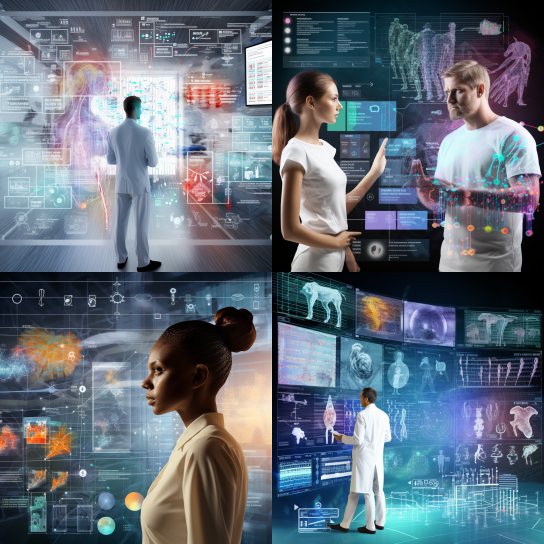What are Generative Models and Examples
Understanding Generative Models: Examples and Applications
What are Generative Models and Examples
Generative Models and Examples
Ever wondered how computers create new things like art, text, or even music? That’s where generative models come in. They’re like creative engines in the world of computers, helping machines make things from scratch.
In this Blog, we’ll break down the basics of generative models and show you real-life examples of their creative magic. Let’s dive in and discover how these smart algorithms are shaping our digital world!
Real "AI Buzz" | AI Updates | Blogs | Education
How do Generative models assist autonomous motors?
History of self-reliant motors
Norman Bel Geddes showcased a pioneering concept for a self-driving vehicle, an electric-powered automobile guided using a system that relied on radio-controlled electromagnetic fields generated with magnetized metallic spikes embedded inside the roadway. This innovative concept was a remarkable vision of autonomous transportation for its time and laid the groundwork for future developments in the field of self-driving cars.
What are Generative Models?
The pros and Cons of Generative AI
Software of generative models in self-driving vehicles
Cutting-edge generative models are powering self-driving vehicles, enabling them to simulate complex driving scenarios, enhance decision-making, and refine navigation strategies.
1. Image synthesis of simulated Training information:
Image synthesis of simulated Training facts plays a essential role within the development and development of self-driving motors.
Through using generative fashions, such as Generative adversarial Networks (GANs), to create synthetic images, self-sustaining vehicle research and improvement in numerous large methods.
2. Data growth:
Generative models are used to enhance actual statistics by means of developing greater various training units. through including modifications to current statistics, autonomous vehicles can learn from a much wider variety of conditions, resulting in elevated adaptability in one-of-a-kind environments.
3. Detection of V anomalies:
Detecting anomalies and capacity hazards is vital to the protection of self-using automobiles. the use of a generative version to simulate ordinary riding behavior allows the device to detect a typical situations that could suggest capability risks.
4. Simulating facet instances and challenging Environments:
Generative models are excellent at simulating difficult situations and complex environments. They help test self-driving algorithms in diverse and challenging conditions.
By exposing the machine to extreme situations, generative models assist discover capability weaknesses and enhance the vehicle’s capacity to address surprising situations.
5. Accelerating Iterative development:
Improvements in independent vehicle generation require iterative development and testing. Generative models expedite this process through enabling speedy iterations through the era of various and customizable datasets. This agility hastens innovation and complements the efficiency of self-using device development.
6. Cost-Effectiveness and privacy issues:
Collecting real-world data for training autonomous vehicles can be costly and raise privacy concerns. Generative models provide a cost-effective solution, reducing the need for extensive real-world data while respecting privacy rights.
7. Preventive preservation:
Generative model can be used to expect the wear of car components based on ancient records. This proactive technique to protection facilitates save you breakdowns and extend the life of your automobile.
Safety:
Protection is paramount in self-using motors. The generated model contributes to safety, affords vital and diverse datasets for schooling, and improves the capability of vehicles that deal with rare and excessive situations.in the course of pregnancy system:
Generative models offer a cost-effective solution for developing self-driving automobiles with the aid of decreasing reliance on expensive actual-world facts for education.
Speedy iteration:
Generating artificial data speeds up the development process. Engineers can experiment with various scenarios and enhance car performance more efficiently, leading to quicker advancements.
Generative AI makes use of deep learning, neural network, and gadget mastering techniques to enable computers to supply content that closely resembles human-created output autonomously. those algorithms analyze from patterns, developments, and relationships within the training information to generate coherent and significant content.
Challenges and future guidelines
a. DataQuality: Making sure the best and accuracy of synthetic records is crucial to avoid bias or unrealistic representation of actual-international situations.
b. Moral considerations: As generative models become more state-of-the-art, potential fraud and moral issues can standup. finding a stability among innovation and protection whilst respecting moral requirements is essential. Focusing on the development and operation of such structures, the seven moral concerns are: Bias, Deception, Employment, Opacity, protection, Oversight and privacy.
c. Climate prediction : Self-driving/independent automobiles need to hit upon road functions in all conditions, regardless of weather or lighting. in the rain, it is promising however inside the snow, it is not clean. Even human beings get into extra injuries all through horrific weather.
AI continues to be studying ‘not unusual experience and it’s miles an Infrastructure and generation complement. Complicated 3D route map introduction , Cybersecurity – the flip side of advanced connectivity, Sensors tricked by way of lousy climate are a number of the demanding situations
The main challenge for self-driving cars is ensuring high safety and trust. It’s crucial that these vehicles operate flawlessly in all conditions to gain public trust and widespread use.
Read More









Leave a Reply